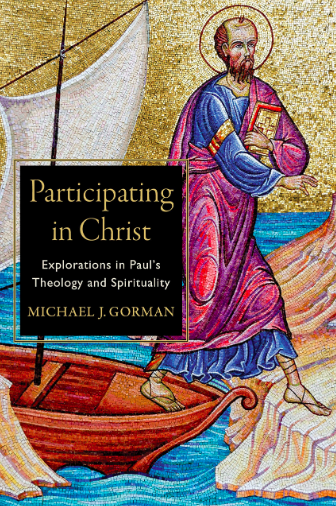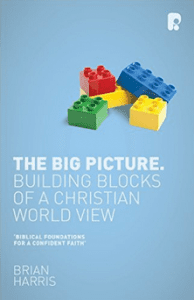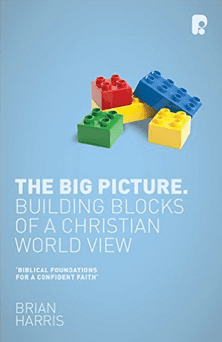 Last week I began a discussion of a recent book by The Rev. Dr. Polkinghorne, Theology in the Context of Science. This is a rather academic book – but the kind of book that someone who wants to move beyond the culture war issues of young earth, old earth, and evolution should find useful. In this book Dr. Polkinghorne looks at the ways in which the insights from science and the scientific way of thinking may be used to help Christians explore theology in our 21st century context.
Last week I began a discussion of a recent book by The Rev. Dr. Polkinghorne, Theology in the Context of Science. This is a rather academic book – but the kind of book that someone who wants to move beyond the culture war issues of young earth, old earth, and evolution should find useful. In this book Dr. Polkinghorne looks at the ways in which the insights from science and the scientific way of thinking may be used to help Christians explore theology in our 21st century context.
The third chapter of this book looks at the questions of space and time – especially the question of time. The relationship of God to time has been a matter of speculation for millenia. St. Augustine pondered this at length in his Confessions. In this chapter Polkinghorne suggests that the nature of time is a metaphysical question – not a scientific question, although the range of possible views is constrained by science.
How scientific discoveries are interpreted in forming a metaphysical world view depends on the metascientific convictions of the interpreter. Consequently, it is a perfectly proper possibility for theological considerations to play their part in decisions relating to the adoption and defense of a particular account of temporality. The context of science does not of itself provide a complete determination of what that view should be. (p. 55)
Within the scientific constraints on the nature of time and our theological ideas about God and creation there are several questions reaching all the way back to Augustine that can be revisited.
Does God exist within time in His creation or is He above or outside time?
Is time unfolding or is it merely another dimension in reality?
These are questions with no firm scientific or theological answer – although a theological view may inform a preference for one possibility over another.
The Nature of Time. Through an understanding of relativity we realize that different observers depending on their motion will experience time differently. If A causes B, A will precede B for all observers, but the time between A and B can vary. Polkinghorne gives two specific examples where this may be relevant in one’s view of theology. The first example is the so-called Twin-Paradox. If one twin is stationary on Earth and the other travels to Proxima Centauri and back (the nearest star to our solar system – 4.2 light years) at speeds approaching a significant fraction of the speed of light the twins will no longer be the same age when reunited. The moving twin will experience time more slowly. Although the twin experiment has not been done with human beings, this prediction of relativity has been tested extensively using the decay times of unstable particles.
The second example Polkinghorne brings up simultaneity. Two connected events can be perceived differently by different observers.
A spaceship is passing close to an observer on Earth. At the moment of passing, a light flash is emitted from a source at the centre of the ship. An observer travelling with the ship will judge this light to be reflected simultaneously in two mirrors at opposite ends of the ship, since it has the same distance to travel in either direction. The observer on Earth, however, will reach a different conclusion. He will judge it to be reflected in the stern mirror before it is reflected in the bow mirror. (p. 57)
The two observers, depending on their relative motion, will perceive the timing of the reflections differently.
These observations, and others, lead to two different views concerning the nature of time – both consistent with the evidence. The block universe view is that reality is atemporal with four dimensions (three spatial dimensions plus time). Time, then, is a human experience of passage along paths in space-time. The present moment is fundamentally no different from any other moment. The other view of time is an unfolding universe or unfolding cosmic time where there is a movement of the present moment in a fundamental way. Polkinghorne notes that Einstein favored the block universe point of view, but there is no fundamental reason requiring one over the other.
The block universe view also corresponds to the view of Augustine. His science, of course, did not lead to the idea. Rather his contemplation of the nature of God led him to this view. God is outside of time and has divine knowledge of the entire created space-time world. Polkinghorne suggests then, that classical theology from Augustine to Aquinas and beyond is consistent with the block universe view. This view of time is foreign to human experience, but often times the nature of reality is quite different from what is predicted based on ordinary human experience. The block-universe view is consistent with divine omniscience and with human agency and free choice. There is no “puppet master” and no deterministic path from beginning to end.
While divine foreknowledge might seem to threaten that freedom … for the God who perceives the whole of history totem simul there is no such foreknowledge, since all events are equally contemporaneous to the atemporal divine gaze.
The view of unfolding cosmic time is preferred by Dr. Polkinghorne. This leads him to a form of open theology – but not a view that God changes or grows. Nor is it a view that time is a necessity imposed on God and out of his control.
A more orthodox open theology sees, on the contrary, God’s acceptance of ah engagement with time as an act of divine condescension by the Creator who is graciously willing to share in the unfolding history of creation. … It is part of the Creator’s decision to bring into being a temporal world. (p. 62)
He points to four arrows of time that seem to indicate that time is more than simply another dimension in reality: (1) the arrow of cosmic history from the big bang, (2) the arrow of statistical thermodynamics with every increasing entropy (an unfolding to equally occupy all accessible states), (3) an organizational arrow in the emergence of greater complexity – from a cosmic soup to stars to planets to life to humans, and (4) a psychological arrow – from a past we remember to a future we do not know.
In the mechanistic Newtonian view of physics complete knowledge of the present entailed as well complete knowledge of the past and complete ability to predict the future. In a quantum world there is a fundamental limit to the ability to divide space, or more accurately phase-space (a space including both position and momentum as separate coordinates) into small bits, and an intrinsic probabilistic nature in the occurrence of events. These constraints lead to an element of openness within a constrained total path. The ultimate outcome can be predicted on a large level while individual events are open. God both knows the course of history and relates, interacts, and responds to his creation and his creatures, made in his image.
What do you think?
What is your metaphysical view of time? What shapes or controls this view?
If you wish to contact me directly you may do so at rjs4mail[at]att.net.
If interested you can subscribe to a full text feed of my posts at Musings on Science and Theology.











